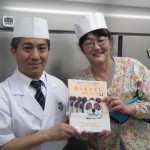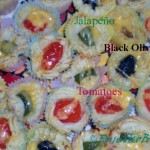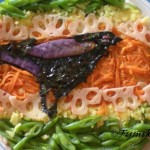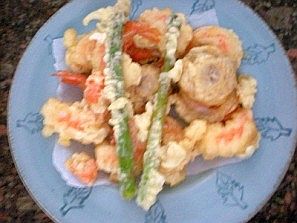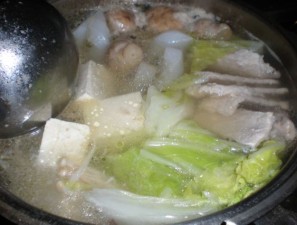Edomae Sushi, vinegar and Sushi rice
I decided to have my old posting from google to this site.
I learned interesting facts about Edomae Sushi at <a href=”http://www.sushischool.jp/”>Tokyo Sushi academy</a> during my Japan visit. Edo is the old name of Tokyo. Edomae Sushi is Tokyo style Nigiri. Nigiri is a shaped Sushi made with sliced fresh fish and Sushi rice.Here is introduction to Sushi vinegar. Sushi vinegar is made of rice vinegar, sea salt and sugar. Sushi vinegar in east part of Tokyo is different from west part. In the west include Osaka, Sushi vinegar recipe include more sugar or sweet (Osaka style) while east part of Japanthe Sushi vinegar is less sugary (Tokyo style). Since I am from Hiroshima which is located in the western part, my home style Sushi is made from sweet Sushi Vinegar. Edomae Sushi uses Vinegar called Akasu or Red vinegar. I had lived in only western part of Japan and never heard about Akasu before hearing from Tokyo Sushi Academy instructor. Akasu or Red vinegar is made from Sake Kasu which is byproducts from sake making process.(See http://www.esake.com/Sake-Food/Kasu/kasu.html .)Edomae Sushi chef has his/her unique recipes of Sushi vinegar by blending, partially red vinegar and the rice vinegar. Sushi rice made using Red vinegar is called Aka Shari which means red Sushi rice in Japanese. Tokyo Sushi Academy uses Mitsukan brand. Mizkan sells Akasu or Kasuzu for only commercial use. Here is a bit of history of Red vinegar from <a href=”http://www.mizkan.co.jp/story/change/01.html”>Mizkan Japan website</a> which is not included in <a href=”http://www.mizkan.com/Corporate/?id=370369210558″>American Mizkan Site</a>. “… Founder of Mizkan, Mr. Matazaemon Nakamura was born as a Sake producer’s son in Edo period. He recognized when bacteria got into the Sake barrel, Sake turned to vinegar. He decided to make vinegar from byproduct of Sake and successfully made Kasuzu or Akasu. Meanwhile, Haya Sushi(fast Sushi), which is origin of Nigiri made of sea food and Sushi rice, was very popular in Edo or former Tokyo. Haya Sushi was made with expensive rice vinegar. Mr. Nakano marketed his Kasuzu as inexpensive alternative to rice vinegar. Sushi chefs at popular restaurant in Edo recognized Kasuzu had flavor and Umami suitable to Sushi rice. They madeHaya Sushi with Kasuzu. Since then, Kasuzu or Akazu has been necessary ingredient to make Edomae Sushi ……”When I was in Tokyo, I looked for Akasu or Kasuzu. I had to go four super markets and several more expensive than rice vinegar due to long processing time. I brought back this rare vinegar to Seattle and made Sushi vinegar by mixing 1:1 ratio of rice vinegar and Akasu. Sushi rice was beige. I made lettuce wrap stuffed with Sushi vinegar, vegetables and meat. They were delicious.Lastly, things that you should know before you decide to go to traditional Edomae Sushi restaurant. Sushi chef decides the price of Sushi when he/she sees the face of the customer. It means the same Nigiri can be cheap at one Sushi restaurant but expensive at another. No price will be listed on the menu. That is why people like to go Kaiten Sushi (conveyor belt Sushi) or Sushi train place. There you can estimate how much you had by number and color of your empty plates.Here is <span style=”font-weight:bold;”>Tokyo style Sushi vinegar recipe </span>½ cup Rice vinegar1 table spoon sugar (Preferably superfine sugar)1 tea spoon sea saltIn the cooking pot, combine all ingredients and heat to melt sugar and salt. Do not boil. Cool the Sushi vinegar and use for Sushi rice. For sweet Sushi vinegar, add extra 1-2 Table spoons of sugar.As you wish you can adjust sugar and/or salt amount.
